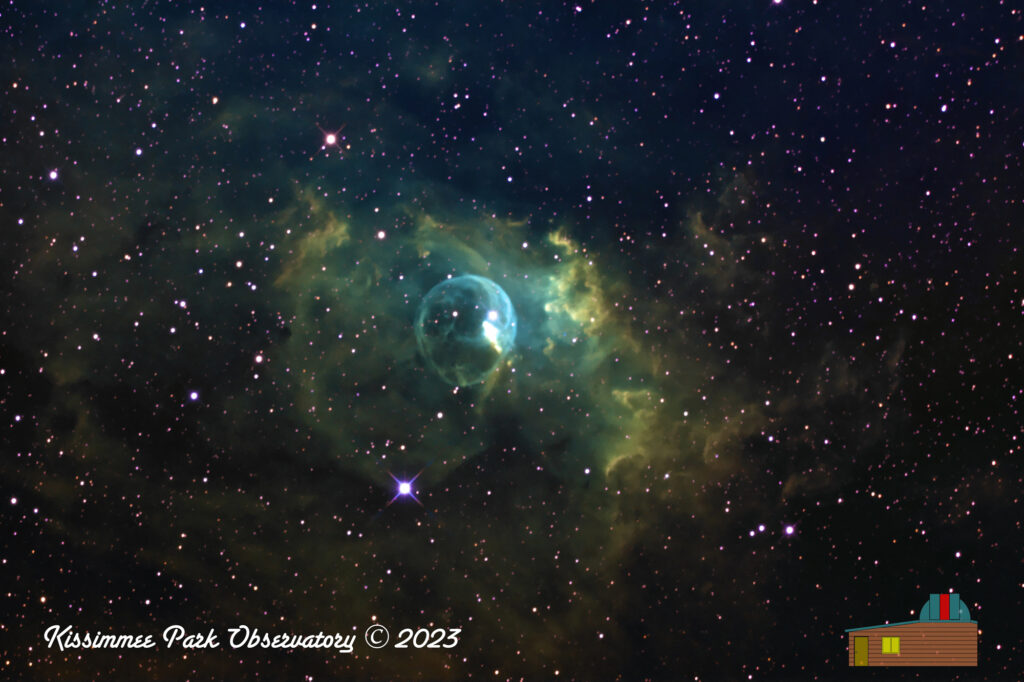Unveiling the Enigmatic Beauty of the Bubble Nebula
The vast and mysterious universe has always captivated humanity’s imagination. Among the countless celestial wonders that grace our night sky, one particular cosmic spectacle stands out for its ethereal beauty and enigmatic nature – the Bubble Nebula. Located in the constellation Cassiopeia, this mesmerizing cloud of gas and dust has fascinated astronomers for centuries. In this blog post, we will explore the captivating features of the Bubble Nebula and delve into the secrets it holds.
Discovery and Formation
The Bubble Nebula, also known as NGC 7635, was discovered in 1787 by William Herschel, a renowned astronomer of his time. It is believed to have formed due to the powerful stellar winds emanating from a massive, hot, and young central star named BD+60 2522. These winds collide with the surrounding interstellar medium, creating a shockwave that shapes the nebula into its distinctive bubble-like appearance.
The Bubble Structure
The Bubble Nebula’s most striking feature is its spherical, balloon-like structure, which spans approximately 10 light-years in diameter. The central star’s intense ultraviolet radiation ionizes the surrounding gas, causing it to glow brilliantly. This process creates a vivid emission nebula, with the bubble’s inner walls glowing in vibrant hues of red and blue.
The Star at the Center
BD+60 2522, the star responsible for the Bubble Nebula’s formation, is a massive and young O-type star. With a surface temperature exceeding 40,000 degrees Celsius and a luminosity thousands of times greater than our Sun, this celestial powerhouse illuminates the surrounding gas and dust, giving birth to the nebula’s mesmerizing colors. However, the star’s extreme heat and powerful stellar winds also erode the bubble’s walls, shaping its intricate, filamentous structures.
The Mystery of the Bubble
While the Bubble Nebula has been extensively studied, many aspects of its formation and evolution remain shrouded in mystery. Astronomers are particularly intrigued by the intricate network of delicate filaments within the bubble. These filaments, composed of ionized hydrogen, are thought to be remnants of previous outflows from the central star. Understanding their origin and the mechanisms behind their formation could provide valuable insights into the life cycle of stars and the dynamics of interstellar gas.
Observing the Bubble Nebula
The Bubble Nebula is a popular target for amateur astronomers and astrophotographers alike. With a moderate-sized telescope, it is possible to observe its faint glow and capture its beautiful colors. However, due to its relatively dim nature, it is best observed under dark skies away from light pollution.
Conclusion
The Bubble Nebula’s ethereal beauty and mysterious nature make it a captivating subject of study for astronomers worldwide. Its intricate bubble structure, vibrant colors, and the enigmatic filaments within continue to fuel our curiosity about the processes that shape our universe. As we gaze upon this celestial wonder, we are reminded of the vastness and complexity of the cosmos, inspiring us to explore further and unravel the secrets of the universe.
Image Info
- Imaged from the Kissimmee Park Observatory, in Saint Cloud, Florida
- Camera : ZWO ASI2600MM Pro
- Scope: Orion RC-12 Ritchey-Chretien Astrograph, 2450mm fl, F/8
- Mount: iOptron CEM-120
- Hydrogen Alpha: 24 subframes of 300s = 120 min integration
- Oxygen III: 24 subframes of 300s = 120 min integration
- Sulphur II: 24 subframes of 300s = 120 min integration
- Total integration time: 360 min = 6 hours.
- Captured via ASIAir Pro automation
- Optical tracking via ASIAir automation via the ASI174mm Pro guide camera
- Separate channels stacked and SHO4 integrated in Astro Pixel Processor
- Image run through Super DeNoising
- Final processing in Aperture

